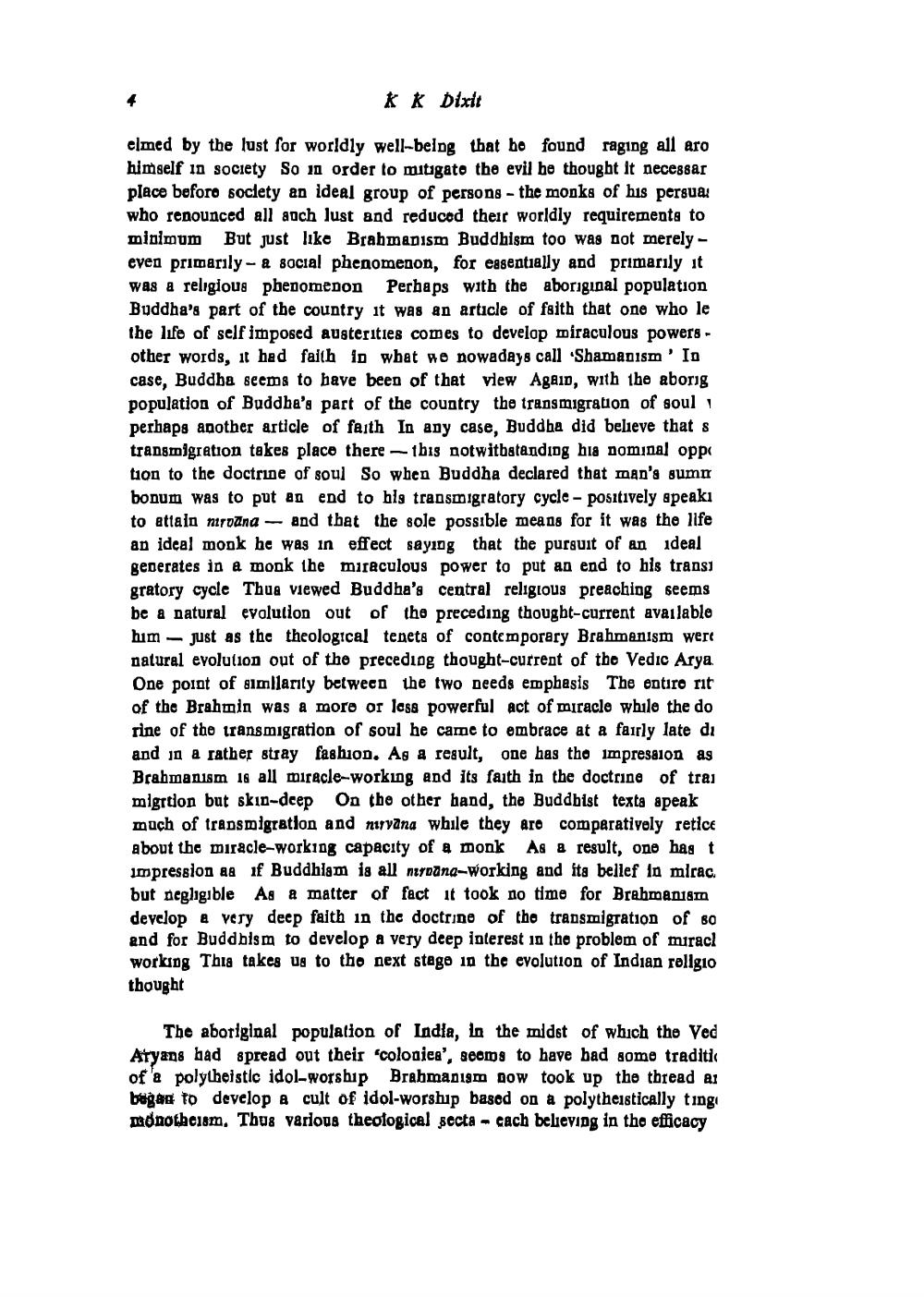Book Title: Sambodhi 1972 Vol 01 Author(s): Dalsukh Malvania, H C Bhayani Publisher: L D Indology Ahmedabad View full book textPage 6
________________ * K Dixit elmed by the lust for worldly well-being that be found raging all aro himself in society So in order to mitigate the evil he thought it necessar place before society an ideal group of persons- the monks of his persua: who renounced all anch lust and reduced their worldly requirements to minimum But just like Brahmanism Buddhism too was not merely - even primarily a social phenomenon, for essentially and primarily it was a religious phenomenon Perhaps with the aboriginal population Buddha's part of the country it was an article of faith that one who le the life of self imposed austerities comes to develop miraculous powersother words, it had faith in what we nowadays call 'Shamanism' In case, Buddha seems to have been of that view Again, with the aborig population of Buddha's part of the country the transmigration of soul perhaps another article of faith In any case, Buddha did believe that s transmigration takes place there this notwithstanding his nominal opp tion to the doctrine of soul So when Buddha declared that man's summ bonum was to put an end to his transmigratory cycle - positively speaki to attain mroana - and that the sole possible means for it was the life an ideal monk he was in effect saying that the pursuit of an ideal generates in a monk the miraculous power to put an end to his transi gratory cycle Thus viewed Buddha's central religious preaching seems be a natural evolution out of the preceding thought-current available him just as the theological tenets of contemporary Brahmanism were natural evolution out of the preceding thought-current of the Vedic Arya One point of similarity between the two needs emphasis The entire rit of the Brahmin was a more or less powerful act of miracle while the do rine of the transmigration of soul he came to embrace at a fairly late di and in a rather stray fashion. As a result, one has the impression as Brahmanism is all miracle-working and its faith in the doctrine of trai migrtion but skin-deep On the other hand, the Buddhist texts speak much of transmigration and murvana while they are comparatively retice about the miracle-working capacity of a monk As a result, one has t impression as if Buddhism is all mreang-working and its bellef in mirac but negligible As a matter of fact it took no time for Brahmanism develop a very deep faith in the doctrine of the transmigration of so and for Buddhism to develop a very deep interest in the problem of miracl working This takes us to the next stage in the evolution of Indian religio thought - The aboriginal population of India, in the midst of which the Ved Aryans had spread out their "colonica', seems to have had some traditi of a polytheistic idol-worship Brahmanism now took up the thread a began to develop a cult of idol-worship based on a polytheistically tig monotheism. Thus various theological sects each believing in the efficacyPage Navigation
1 ... 4 5 6 7 8 9 10 11 12 13 14 15 16 17 18 19 20 21 22 23 24 25 26 27 28 29 30 31 32 33 34 35 36 37 38 39 40 41 42 43 44 45 46 47 48 49 50 51 52 53 54 55 56 57 58 59 60 61 62 ... 416
